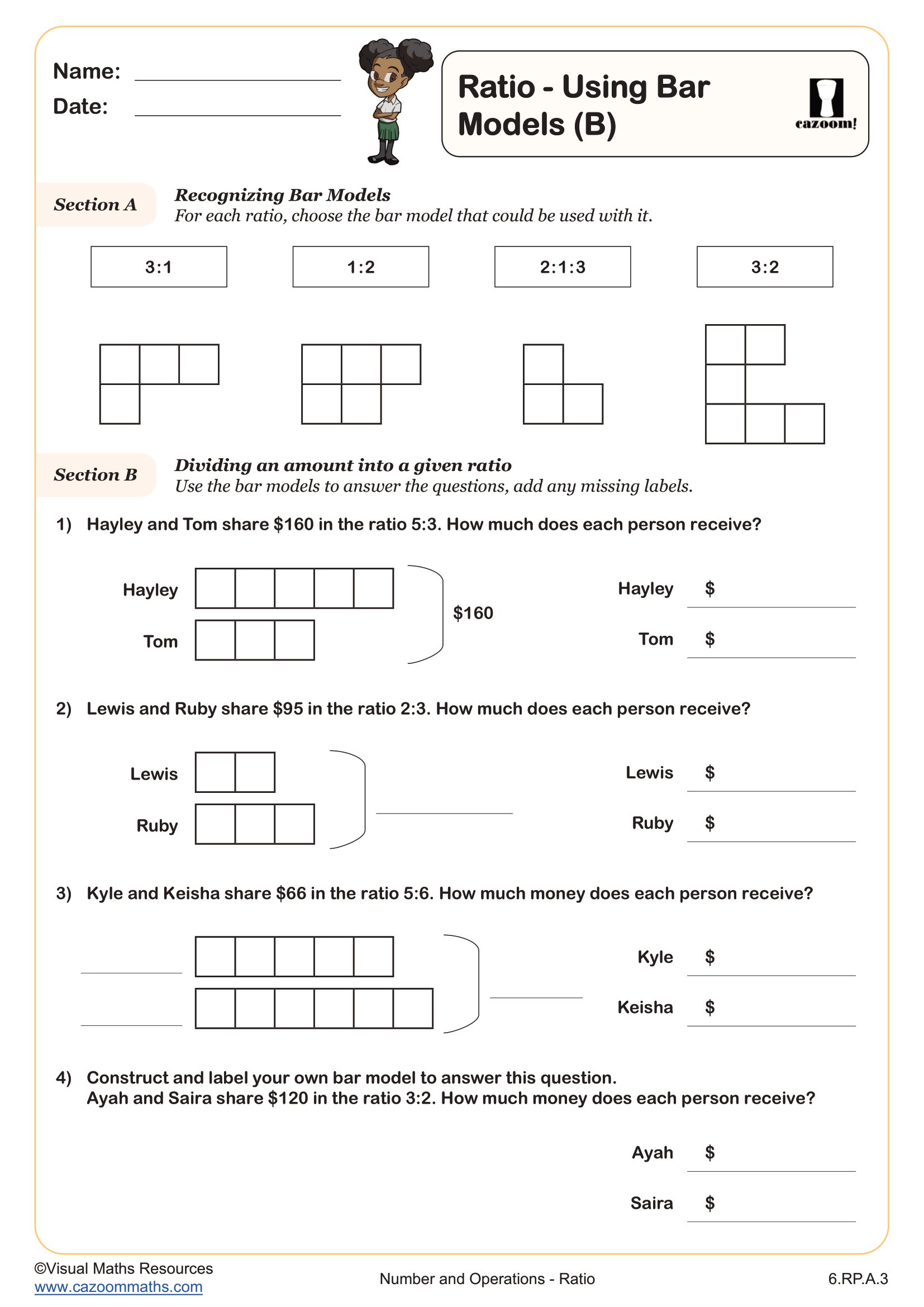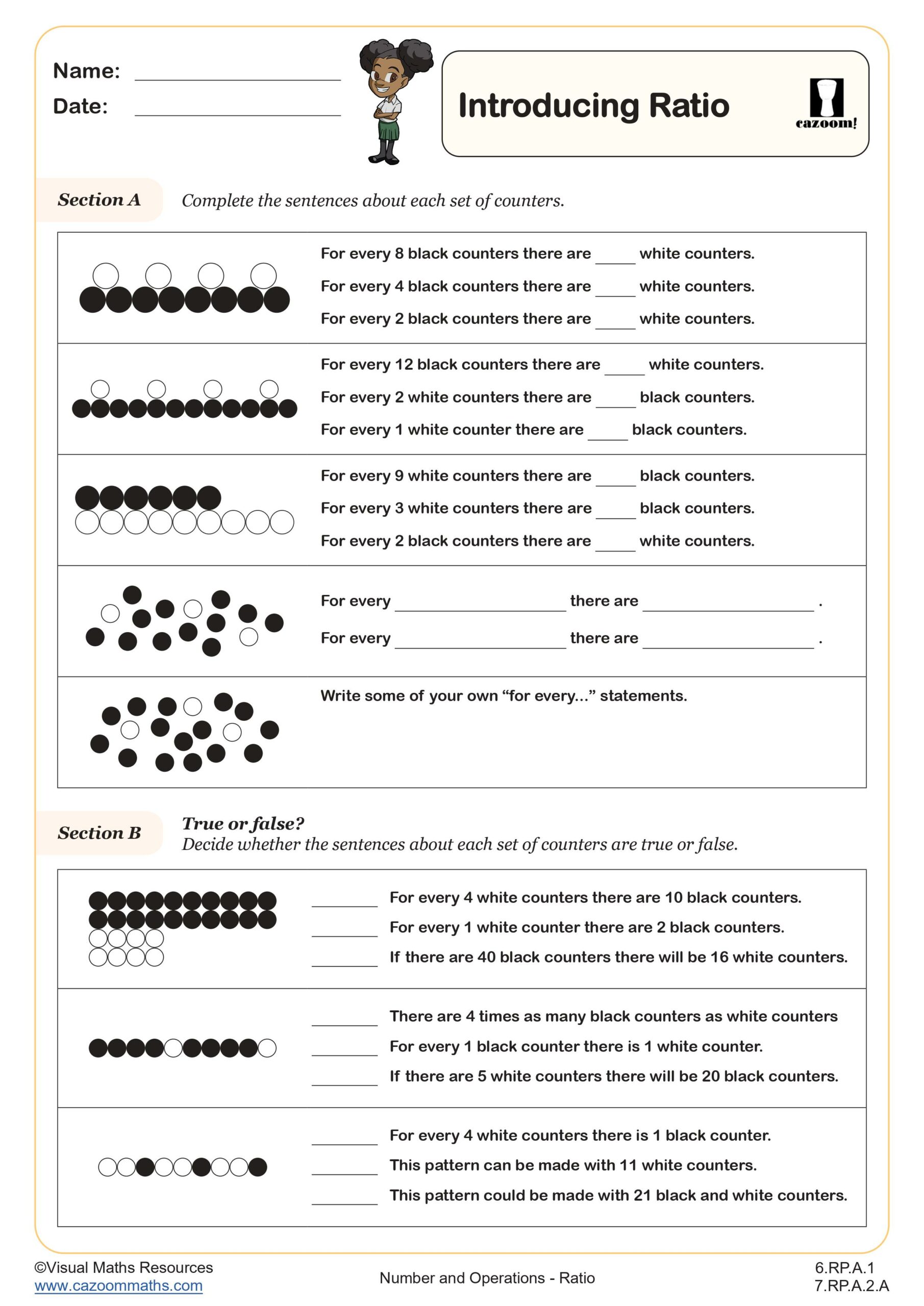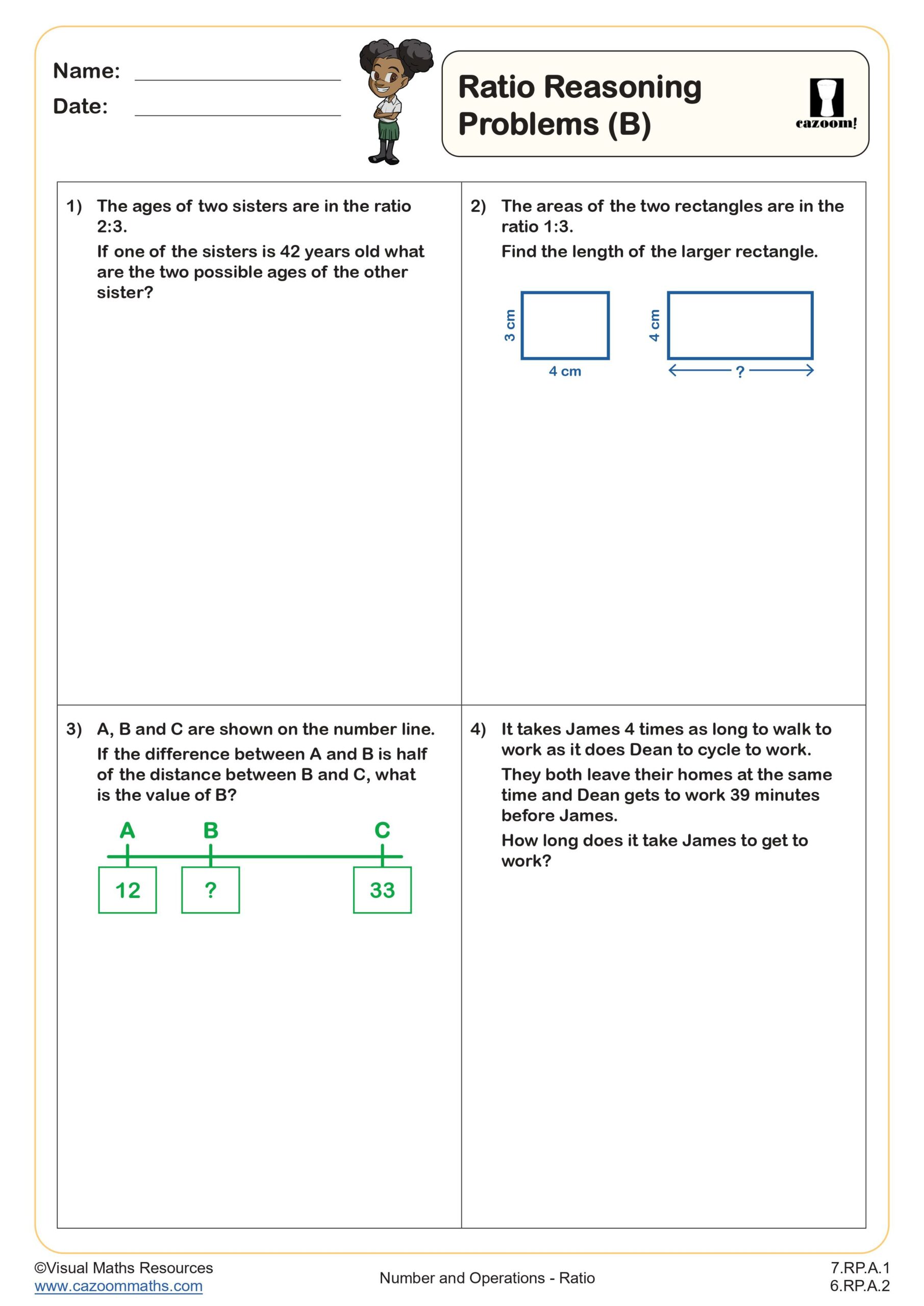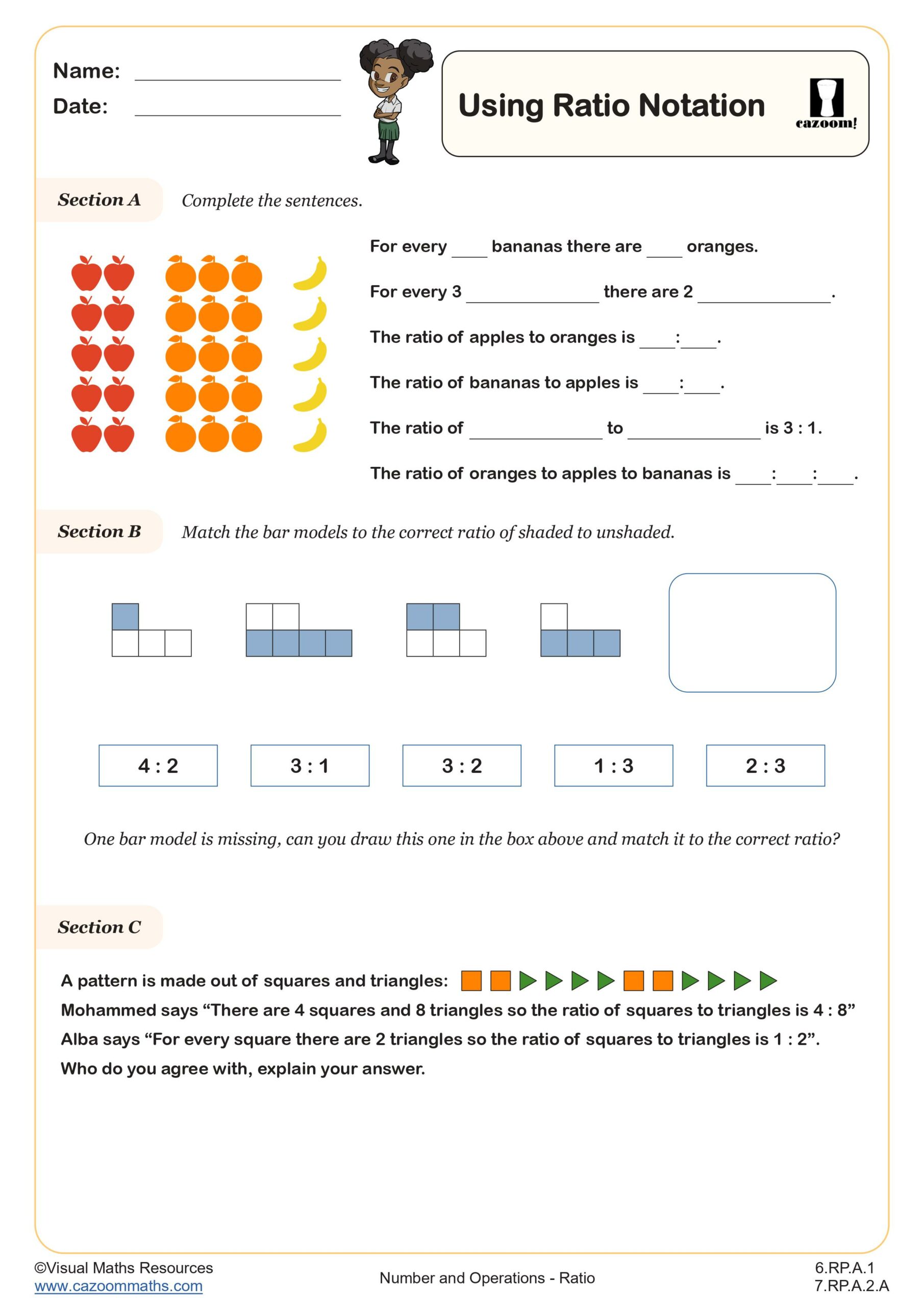Ratio - Using Bar Models (A) WORKSHEET
Ratio - Using Bar Models (A) WORKSHEET DESCRIPTION
Bar models are used throughout this worksheet as a tool for students to divide amounts into given ratios.
The worksheet asks students to use bar models in multiple ways including: when the ratio and one value is known, when the total is known, and when the difference is known.
In sections A and B, examples are provided for students to follow, and the bar models are already provided. In section C, learners are required to construct their bar models.
All divisions produce integer answers, allowing your students to focus on the differences in language between questions and where their bar models will provide the answers needed.
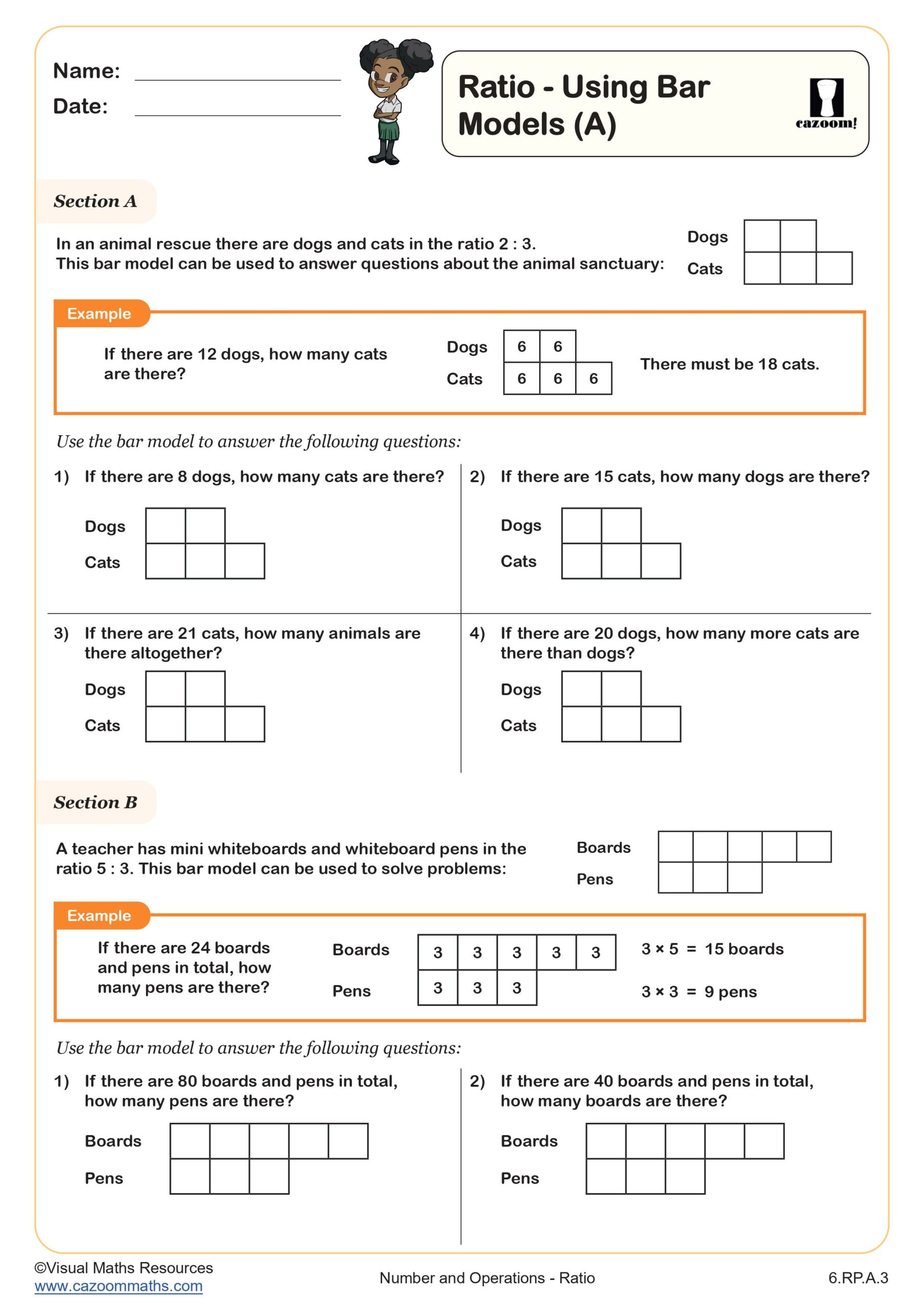
RELATED TO Ratio - Using Bar Models (A) WORKSHEET
Frequently Asked Questions
This ratio - using bar models (a) worksheet is designed for students in 6th Grade and aligns with Common Core State Standards.
